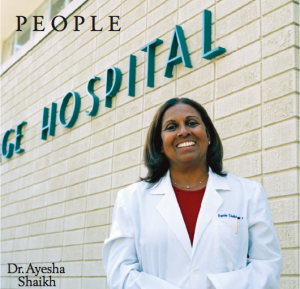Center for Urban Agriculture at Fairview Gardens
As one of the oldest organic farms in Southern California, Fairview Gardens is often referred to as “the little farm that could,” for its unique diversity of products and as an internationally respected model for small scale urban food production, agricultural land preservation, farm-based education, and the integration of farms and the communities that they serve. The fertile fields — on Fairview Avenue near Cathedral Oaks Road in Goleta — have been chugging along since 1895. But since the farm’s 1997 evolution into the nonprofit Center for Urban Agriculture at Fairview Gardens, lessons in organic farming and sustainable living have been added to the menu.
The produce stand is clearly visible from the street, but a closer look reveals the beginnings of avocados hatching from enormous trees in the “cathedral” orchard and long rows of asparagus poking their heads out of wet soil. Between rows of trees, a variety of squash stand at attention and you can smell the apples blossoming in preparation for the next Farmhouse Cooking Class, where participants will learn canning and preserving, and how to make apple muffins and apple and butternut squash soup.
While most of Goleta’s once fertile fields have been paved over — and indeed the farm is surrounded on all sides by tract homes, shopping malls, and suburban thoroughfares — the Center for Urban Agriculture’s founder/executive director Michael Ableman’s foresight enabled Fairview Gardens to escape that fate. To prevent the land from being turned into housing, he turned the farm into an agricultural conservation easement, and it will remain that way in perpetuity — to continue to delight neighbors with fresh organic fruits and vegetables, and sometimes annoy them with the early morning chicken cacophony and compost cologne.
Ableman chronicled the center’s founding in a book, On Good Land: The Autobiography of an Urban Farm (Chronicle Books, 1998), and Meryl Streep narrated Beyond Organic, a PBS documentary about his work.
While appreciative of the national recognition, much of the center’s efforts are focused on the local community.
About 5,000 school kids come through the farm each year, estimates Administrative Director Matthew Logan. “We just had a Goleta Valley Junior High group come through here and they were amazed that carrots grow in the ground,” he laughs. ” So that’s our main mission in so far as school tours is reconnecting kids with where their food comes from and (the benefits of) farming without chemicals or pesticides.”
The center is open to the public every day for self-guided tours, which highlight the farm’s crops and techniques, and include information on larger agricultural and environmental issues such as biodiversity, soil erosion, and pesticide use.
The use of grey water and compost, growing rows of crops between trees, rotating crops and “disking under” the old crops so that their roots add nutrients to the soil are just a few of the techniques used to maintain the farm in the most environmentally friendly fashion.
Not only is the message getting out to school kids; they’re passing it on to their parents.
“It’s amazing how many of the kids actually bring their parents out here after for at least one visit,” says Logan.
“…We’re growing food, we make enough money to support the farm and be able to pay our employees but we can also put on a number of educational events with the money that we make from the farm. … So our point is … you can farm it wisely so that you can make enough money to sustain yourself. That it can be done.”
Originally published in Santa Barbara Magazine in spring 2006.
Click here to read Giving Back: Fairview Gardens in Santa Barbara Magazine


